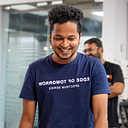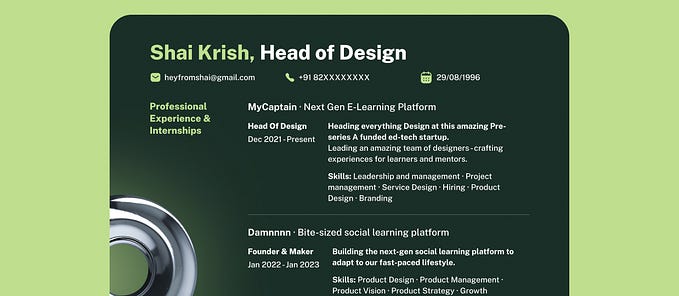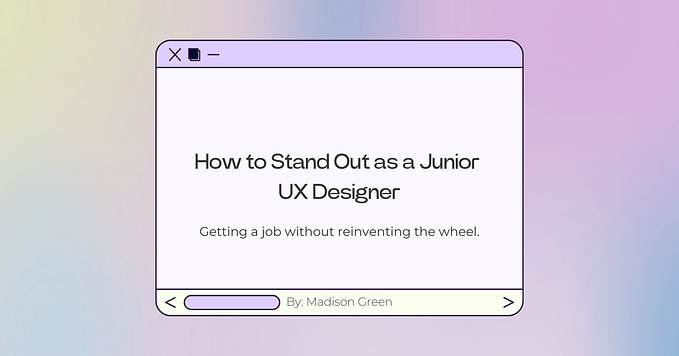
I went through 1000+ resumes of Product Designers & found this
Are you a product designer looking to create a resume that catches the attention of potential employers? In today’s competitive job market, standing out is more important than ever.
Having reviewed thousands of product design resumes, I’ve identified some game-changing tips to help you craft a compelling and unique resume that increases your chances of landing a dream job.
#1 Remove the about section: Cut the Fluff

If you’re looking to create a standout resume that catches the attention of potential employers, consider removing the “About” section. Not only is this section often redundant, but it can also pigeonhole you into a loop of questions that detract from the main purpose of your resume.
- The “About” section on a resume can be redundant as the information provided may already be present in other parts of the resume, such as education, work experience, or skills. Additionally, adding an “About” section may lengthen your resume, making it harder to read and less appealing to recruiters.
- Including personal information such as age, marital status, or hobbies may raise unnecessary questions that are not relevant to the job you’re applying for. For instance, mentioning that you have children may lead the recruiter to wonder if you can commit to working long hours.
- Including personal information in the “About” section can introduce biases or discrimination. For example, stating your gender, race, or religion may lead to unconscious discrimination based on the recruiter’s own biases or assumptions. It’s best to focus on your qualifications and achievements that are relevant to the job, rather than personal information that may introduce biases.
#2 Write better job descriptions: Highlight Your Impact

Showcase your impact and results to demonstrate your ability to deliver value to potential employers.
Actionable Tip: Use a problem/solution format to highlight how you’ve solved problems for previous clients or employers. Use specific examples and metrics to demonstrate your impact.
Template: [Problem], [Solution], [Result]
- Identified [specific problem] and designed [specific solution] resulting in [specific result]
- Redesigned [specific product feature] resulting in [specific improvement] in [specific metric]
Example:
Product Designer, XYZ Startup, May 2017 — Dec 2018Identified usability issues in the existing mobile app and designed an intuitive, user-friendly interface, resulting in a 30% increase in user engagement and a 20% decrease in user churn.
Redesigned the checkout process on the company’s e-commerce platform, resulting in a 25% increase in conversion rates and a 15% increase in average order value.
Collaborated with the engineering team to implement a new feature that allowed users to customize product orders, resulting in a 40% increase in revenue from personalized orders.
Conducted user research and A/B testing to improve the onboarding process, resulting in a 50% increase in user retention in the first 30 days after sign-up.
#3 Demonstrate Your Process
Share your design process and approach to demonstrate your creativity, attention to detail, and problem-solving skills.
Actionable Tip: Use a case study format to demonstrate how you approach design problems. Share your research, ideation, and iteration process to demonstrate your design thinking.
Template: [Problem], [Research], [Ideation], [Iteration], [Result]
- Analyzed [specific user needs] through [specific research methods]
- Brainstormed [specific design solutions] based on [specific insights]
- Iterated on [specific design concept] resulting in [specific solution]
#4 Emphasize Collaboration
Product design is a team effort, and your resume should reflect your ability to work with others.
Actionable Tip: Highlight your collaboration skills and experience working with cross-functional teams. Showcase how you communicate effectively, handle conflicts, and contribute to successful product launches.
Template: [Team], [Contribution], [Result]
- Collaborated with [specific team] to [specific contribution] resulting in [specific result]
- Led [specific design sprint] with [specific team members] resulting in [specific outcome]
#5 Customize Your Resume for the Job
When it comes to catching the attention of potential employers, one size does not fit all. To stand out from the crowd, it’s essential to tailor your resume to the specific job and company you’re applying to.
Actionable Tip: Research the company and the role to understand their needs and requirements. Use keywords from the job description to highlight your relevant skills and experiences, and customize your resume accordingly.
#6 Inject Your Personality and Passion
Design is not just a technical skill, it’s also an art form. Employers want to see that you’re not only a skilled designer, but also a passionate and creative individual. Adding a personal touch to your resume can make all the difference.
Actionable Tip: Use storytelling techniques to inject your personality and passion into your resume. Include a personal statement or a section about your hobbies and interests to show your human side and what motivates you.
#7 Keep Your Resume Up-to-Date
Your resume is a living document that should evolve as you gain new skills and experiences. Keeping it up-to-date will save you time and effort when applying for new positions in the future.
Actionable Tip: Set a reminder to update your resume regularly and keep a record of your accomplishments and projects. Use numbers and metrics to quantify your impact and demonstrate your results.
#8 Optimize for ATS
In today’s digital age, many companies use Applicant Tracking Systems to screen resumes before they’re reviewed by human recruiters. To increase your chances of getting past this initial screening, it’s crucial to optimize your resume for ATS.
Actionable Tip: Use relevant keywords throughout your resume to increase the chances of matching with the job requirements. Use standard section headings, avoid using images or graphics, and save your resume as a PDF to maintain formatting. Test your resume for ATS compatibility using online tools.
That’s why I built a Superpowered Resume for designers.
I’ve developed a powerful template that can help you distinguish yourself from the competition and effectively highlight your skills and experiences. But don’t just take my word for it. My girlfriend has successfully used this template to ace screening rounds with Series E organizations ranging from Cult.fit to NoBroker!
That’s right, she landed internships and full-time offers at some of the most sought-after companies in the industry using my template. You can access it over here 👇🏼
You can use this coupon to get 50% off: LETSGETSOMEOFF
Summing Up
In conclusion, creating a compelling product design resume takes time and effort, but it’s worth it to make a great first impression. By using these actionable tips and templates, you can create a unique and effective resume that showcases your skills and experiences as a product designer. Good luck with your job search 🦄!








